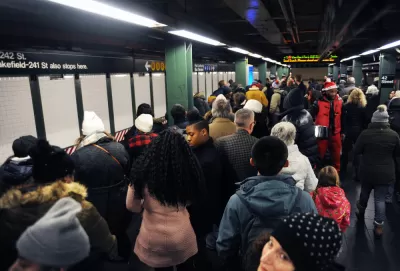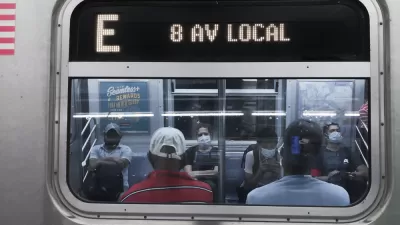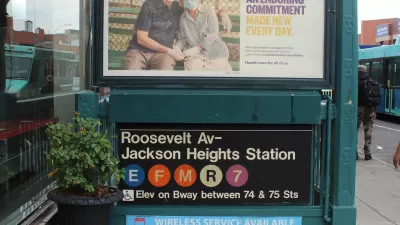As subway riders return in fits and starts, some stations are experiencing a much faster recovery than others.

New York City's subway riders are coming back, but the return has been uneven across the city's boroughs. Michael Gold, Ana Ley and James Thomas explore the differences in ridership patterns in Manhattan, Brooklyn, and Queens.
Stations in lower-income areas in Brooklyn, Queens and Upper Manhattan, where residents are less likely to be able to work from home and typically depend more on public transit, have rebounded far faster than stations in office-heavy sections of Manhattan, including some that were once the busiest in the system, where many workers are still able to work remotely.
The system's low ridership numbers put it in the same difficult position as transit agencies around the country that are struggling to continue serving transit-dependent riders while dealing with labor shortages and slashed revenues.
The article details the experiences of riders at three different stations. The daily commute never stopped for many essential workers at the Junction Boulevard station in Queens, where ridership was back to 74.2 percent of pre-pandemic levels by November 2021. Meanwhile, ridership at Manhattan's Wall Street station, one of the system's lowest, remains at a dismal 37.5 percent of 2019 levels. The article notes that the drop in commuters has deeply affected the small businesses that depended on white-collar workers, while some riders avoid the eerily empty subway because of safety concerns, an issue the city is trying to mitigate with more visible patrols and PR campaigns.
FULL STORY: Here’s Where Subway Riders Have Returned. And Where They Haven’t.

Trump Administration Could Effectively End Housing Voucher Program
Federal officials are eyeing major cuts to the Section 8 program that helps millions of low-income households pay rent.

Planetizen Federal Action Tracker
A weekly monitor of how Trump’s orders and actions are impacting planners and planning in America.

Ken Jennings Launches Transit Web Series
The Jeopardy champ wants you to ride public transit.

Opinion: Transit Agencies Must View Service Cuts as Last Resort
Reducing service could cripple transit systems by pushing more riders to consider car ownership, making future recovery even less certain.

‘Smart Surfaces’ Policy Guide Offers Advice for Building and Maintaining Urban Tree Canopies
Healthy, robust tree canopies can reduce the impacts of extreme heat and improve air quality.

New Jersey Lawsuit Targets Rent-Setting Algorithms
The state of New Jersey is taking legal action against landlords and companies that engage in what the state’s Attorney General alleges is illegal rent fixing.
Urban Design for Planners 1: Software Tools
This six-course series explores essential urban design concepts using open source software and equips planners with the tools they need to participate fully in the urban design process.
Planning for Universal Design
Learn the tools for implementing Universal Design in planning regulations.
Heyer Gruel & Associates PA
Ada County Highway District
Institute for Housing and Urban Development Studies (IHS)
City of Grandview
Harvard GSD Executive Education
Toledo-Lucas County Plan Commissions
Salt Lake City
NYU Wagner Graduate School of Public Service




























